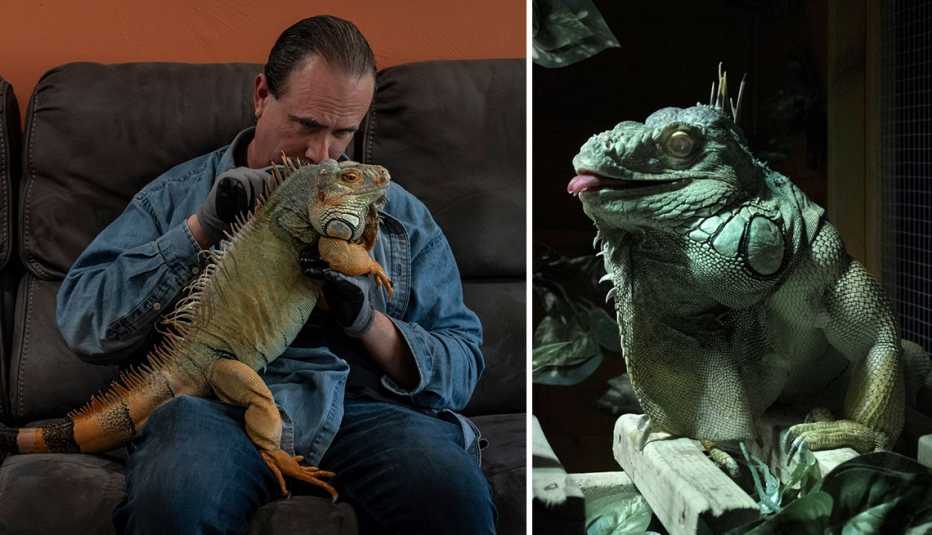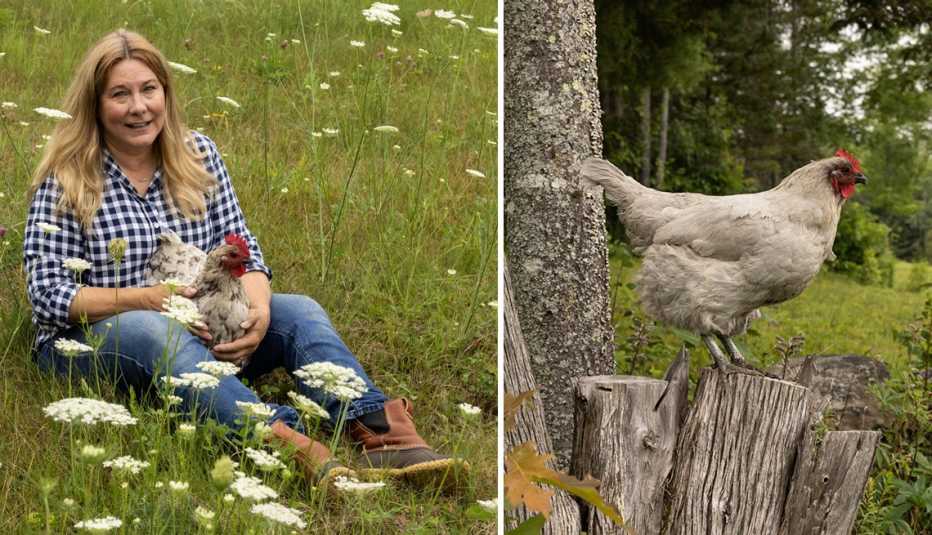AARP Hearing Center


When people think about pets, it’s often furry kittens or puppies that come to mind. But there are lots of other animals that can provide camaraderie and companionship. Everything from fish and guinea pigs to chickens and lizards can make good pets and can fit into any limitations or preferences a pet owner might have around care and cost.
It’s true that cats and dogs are by far the most popular pets in America: 38 percent of households own canines and 25 percent include felines, according to the American Veterinary Medical Association. But there are lots of other animals that may also fit the bill.
Some owners may choose to have a menagerie, like Doug Mader, 66, a Florida-based veterinarian who has two dogs, two cats, two snakes, three tortoises, a frog and a big red bird as part of his family.
“It is a well-known fact that people need companionship,” Mader says, adding that a wide variety of animals can be excellent for fulfilling this role. Scientific studies have shown a range of benefits that come from pet ownership, particularly among older adults, he says. Those benefits include lower blood pressure, reduced depression and improved motor skills.
A 2021 study published in the journal Frontiers in Public Health found that during the height of the pandemic, older adults who owned a pet said the animal added meaning and purpose to life and helped them maintain a routine.
So whether you have a horse or a snake, a hamster or a tortoise, you’ll find benefits and joy in living with a pet. Here are eight examples of people who have nontraditional pets and why they love them.


Joyce Romero, 66
Los Angeles
Pet: Franklin the tortoise
Twenty years ago, the Romero family got a tortoise named Franklin. Today, Joyce and her husband, Bob, are empty nesters and the tortoise remains an important part of their family.
“Every morning I make his salad with Romaine leaves, collard greens, kale and endive,” Romero says. She finds treats for Franklin on her walks with a neighbor, picking rose petals and dandelions. Franklin, who lives in the backyard in a garden box, typically digs under the ground and goes into hibernation from November to March. During the warmer months, he is very active and enjoys exploring their front yard, Romero says.
“Surprisingly, he is very fast and I need to pay close attention otherwise we will lose track of him,” she says. “I like to keep an address label on his shell when I take him out in case he wanders off.”
Tortoises, says Romero, are wonderful pets because they are relatively low maintenance. “My husband and I have always been animal lovers and also have two dogs and two cats,” she adds. “As we age, we enjoy our pets so much more.” The dogs and tortoise get the duo out for walks, which keeps them busy. “However, the tortoise gives us a vacation when he hibernates and we don’t have to make his salad every morning,” Romero jokes.


Trae Bodge, 55
Montclair, New Jersey
Pet: Willow the rabbit
Bodge got a pet rabbit named Willow after the family guinea pig died of old age in 2020.
“We loved our guinea pig, but wanted our next pet to be a bit more interactive — more a member of the family — so we chose a rabbit,” she says. Willow brings her family constant joy. “Our favorite interactions with him are when he chases us — or mostly me — back and forth across the room and sometimes does funny little leaps in the air,” she shares. “After his run, he will jump up on our laps for a few raisins, which are his favorite snack.”
Willow is free roaming, doesn’t have a cage and is trained to use a litter box. He loves to spend hours under Bodge’s desk and keep her company while she works throughout the day.


Steve Replin, 75
Denver
Pet: Maxie the African grey parrot
Replin is not shy about saying his 10-year-old African grey parrot is “the love of my life.”
“He is just a bit feisty, but so am I, and we literally see eye to eye on most subjects,” he says, with a laugh. Maxie, he says, is almost like having a best friend around all the time. Replin works from home and credits the bird as keeping him from getting lonely without being in the presence of physical coworkers. “Maxie is more than willing to participate in the process of preparing great documents, and loves phone calls as well,” he says. The bird loves to cuddle with Steve’s wife and lets the duo know how much he misses them whenever they aren’t in the same room.
“Being loved by a bird, or any pet for that matter, is heartwarming,” says Replin. “As I am his caretaker and his well-being is directly our responsibility, it makes one focus on something outside of themselves.”


Aimee Grove, 54
San Francisco
Pet: Luc the horse
Grove rode horses as a child and picked the hobby back up as an adult. Then, she saved up for five years to buy her first horse.
“He’s more Labrador retriever than horse in personality — snuggly, sweet, very food motivated, loves naps and also people and dogs,” she says. Grove describes Luc as “a mellow dude who takes care of me in every way — jumping around courses, at horse shows or just hanging around the barn.” Grove is an anxious, type A personality and says Luc’s mellow personality is soothing for her.
“Some people who ride think of a horse or their horses as a mount for their sport,” says Grove. “In my case, Luc is 1,000 percent a pet first and foremost, but he’s also a trusted companion and partner.”







































































More From AARP
Save Money on Pet Ownership
Don't forget Fido in your budget
Pet Ownership May Delay Cognitive Decline in Older Adults
Human-animal bond keeps the brain sharp for those over 65, researchers say
7 Ways a Dog Can Be Good for You
Furry friends contribute to our health and happiness in so many ways